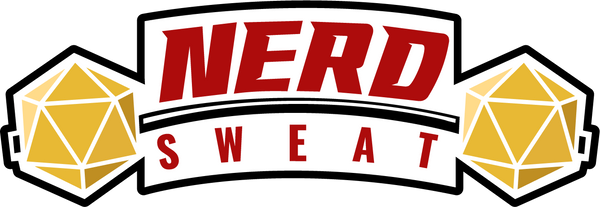
The Ethics of Alignment: Should We Finally Retire the Chart?
What Is Alignment, Really?

Since the earliest days of Dungeons & Dragons, the alignment chart has served as a moral compass — a 3x3 grid of Law vs. Chaos and Good vs. Evil. Want to play a selfless knight? You’re Lawful Good. A manipulative schemer? Neutral Evil. A chaos-loving jester with a dagger? Chaotic Neutral, of course.
But as storytelling in D&D evolves, many players and Dungeon Masters are starting to ask:
Do we still need this chart? Or is it time to let it go?
The Origins of Alignment: Simplicity in a Complex World
Back in the Advanced Dungeons & Dragons days, alignment helped define a character’s moral stance — and determined which spells or magical items would work (or backfire!). It was mechanical, not just philosophical.
📚 Reference: In AD&D, a Paladin had to remain Lawful Good or risk losing their powers. Alignment was a straightjacket — fall out of line, and the game punished you.
But the game has changed.
The Problem With Pigeonholes
As character backstories became richer, and roleplaying became more nuanced, the alignment system started to show its cracks.
Imagine trying to squeeze a character like Severus Snape into a single alignment box. Is he Lawful Neutral for following rules? Chaotic Good for his hidden motives? Neutral Evil for the harm he causes?
🎲 Example: A player roleplaying a “Lawful Good” paladin may face conflict if they want to spare a villain to gather more intel — is that betrayal or wisdom?
The real world is messy. So are great stories. When characters must make tough decisions, the alignment chart often limits creativity instead of enhancing it.
The Shift in Modern D&D
Wizards of the Coast is already moving away from strict alignment structures. In recent 2024 D&D materials and newer 5e books (like Monsters of the Multiverse), many monsters no longer have alignment listed or are simply labeled as neutral. Even sentient races — once forced into moral categories — now emphasize individual traits over alignment.
🌟 Quote from Jeremy Crawford (D&D Lead Designer):
“We want players to think of alignment more like a suggestion than a rule.”
What’s Replacing Alignment?
So if not alignment, then what?
Here are some trending alternatives that offer greater depth:
1. Character Ideals, Bonds, and Flaws
Already baked into 5e’s character creation, these offer more specific moral guidance than a broad alignment label.
🧠 Tip: Use these as narrative levers to drive conflict and growth.
2. Motivation Systems
Games like Blades in the Dark or Fate prioritize character motivations and beliefs over static morality. DMs can adapt this by asking:
“What drives your character more — justice, loyalty, revenge, or curiosity?”
3. Ethical Dilemmas in the Campaign
Instead of alignment, challenge players with hard choices. Let morality emerge from their decisions.
🎭 Example: In one campaign, the party has to choose between saving a village or capturing a powerful villain. There’s no “right” choice — just consequences.
Final Thoughts: Embracing Complexity
Retiring the alignment chart doesn’t mean losing morality from your campaign — it means upgrading it.
Rather than what box you fall into, ask:
What principles do you hold? What lines won’t you cross? What will you risk everything for?
In the end, Dungeons & Dragons is a game about choices — not just hit points and initiative rolls, but the choices that shape who your character becomes.
And that’s something no alignment chart can capture.
Resources to Explore Further:
- 🔗 Sly Flourish – Character-Driven Campaigns
- 🔗 DnDBeyond – Alternatives to Alignment
- 📖 Fate Core System (by Evil Hat Productions) – Offers a flexible belief/drive system.
- 🎙️ Matt Colville YouTube – Alignment (Watch here)
Want to spark discussion at your table? Share this blog with your party and ask:
If alignment didn’t exist, how would your character define their morality?

1 comment
Alignment, like anything else in the game, is only a problem if a player uses it to limit themselves rather than as a starting point for what they want to do. Even then, limitations or boundaries can aid creativity by helping you focus. It’s also relative, so it’s just there for us to do what we want to do with it. It shouldn’t be required, though. The traits/bonds/flaws/ideals are the same – they’re tools that are there for us to help us get a clearer idea of our character in our mind so we can roleplay better.
(And loath as I am to talk about That Series by That Person, I think Snape is pretty clearly Neutral Evil with true Neutral leanings. His motivations are almost entirely selfish (if understandable), even after he changes his allegiances. Being NE doesn’t stop him from doing good, or from working with a team or following rules (or using them as a weapon), or being a loner. It’s just a convenient shorthand to describe where he’s coming from. But it’s all subjective. If a player were playing a Snape-alike and said he was CG, that’s valid too, if it helps the player think about the character’s motivations and mindset in general.